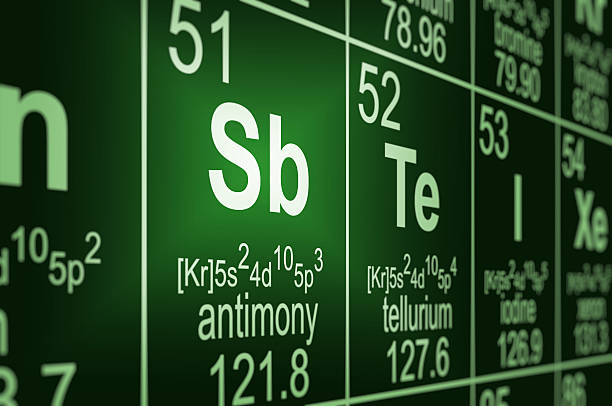Antimony

Parameter Type: Drinking Water Testing for Volatiles
Parameter Name: Antimony
What it is and Where it Comes From:
Antimony is a chemical element with the symbol Sb and atomic number 51. A lustrous gray metalloid, it is found in nature mainly as the sulfide mineral stibnite (Sb2S3). Antimony compounds have been known since ancient times and were powdered for use as medicine and cosmetics, often known by the Arabic name kohl. Metallic antimony is also known but it was erroneously identified as lead upon its discovery. The most widely used antimony compound is antimony trioxide, used as a flame retardant. Antimony is also found in batteries, pigments, and ceramics/glass. Drinking water testing gives you several benefits like peace of mind, identifying contaminants in your water, and insight into health concerns. Safe Home offers Laboratory drinking water testing kits for antimony, allowing you to collect your water sample and ship it directly to our EPA-Certified Laboratory. This platform of drinking water testing for Antimony will give you an accurate level based on the lowest level of a parameter our instruments can detect (Method Detection Level). Safe Home drinking water testing for metals can be used for city and well water supplies. Drinking water testing should be done any time you notice a significant change in your water quality.
Health Effects:
Short-term health effects that the EPA has found that antimony can potentially cause the following health effects when people are exposed to it at levels above the MCL for relatively short periods of time is nausea, vomiting and diarrhea. There is no reliable data available concerning health effects from long-term exposure to antimony in drinking water. Antimony is a (known/potential drinking water) human carcinogen. Therefore, drinking water testing is great for monitoring contaminates in your water system.
Solutions to Contaminant Levels:
If contaminant levels are found to be consistently above the MCL, your water supplier must take steps to reduce the amount of antimony so that it is consistently below that level. The following treatment methods have been approved by EPA for removing antimony: Coagulation/Filtration, Reverse Osmosis. The coagulation process involves adding iron or aluminum salts, such as aluminum sulphate, ferric sulphate, ferric chloride, or polymers, to the water. These chemicals are called coagulants and have a positive charge. The positive charge of the coagulant neutralizes the negative charge of dissolved and suspended particles in the water. When this reaction occurs, the particles bind together, or coagulate (this process is sometimes also called flocculation). The larger particles, or floc, are heavy and quickly settle to the bottom of the water supply. This settling process is called sedimentation. In a water treatment facility, the coagulant is added to the water, and it is rapidly mixed, so that the coagulant is circulated throughout the water. The coagulated water can either be filtered directly through a medium filter (such as sand and gravel), a microfiltration or ultrafiltration membrane, or it can be moved to a settling tank. In a settling tank, or clarifier, the heavy particles settle to the bottom and are removed, and the water moves on to the filtration step of the treatment process. As coagulation does not remove all the viruses and bacteria in the water, it cannot produce safe drinking water. It is, however, an important primary step in the water treatment process, because coagulation removes many of the particles, such as dissolved organic carbon, that make water difficult to disinfect. Because coagulation removes some of the dissolved substances, less chlorine must be added to disinfect the water. A municipal water treatment plant can save money by using less chlorine, and the water will be safer, because trihalomethanes (THMs) are a dangerous by-product that results from the reaction of chlorine with NOM. Reverse osmosis is a process that removes foreign contaminants, solid substances, large molecules, and minerals from water by using pressure to push it through specialized membranes. Here’s how reverse osmosis works. Unlike osmosis, which is a passive process, reverse osmosis requires external force (pressure) to work. Pressure is applied to a highly concentrated solute solution, such as salt water, to pass through a membrane to a lower concentrate solution. The membrane allows water to flow through but blocks out larger molecules, like contaminants. The reverse osmosis process leaves higher concentrations of solute on one side and only the solvent, or freshwater, on the other. Who do I need to contact to find out more information about water quality in my area? Every community water supplier must provide an annual report to its customers, known as a Consumer Confidence Report (CCR). The report provides information on your local drinking water quality, including the water’s source, contaminants found in the water, and how consumers can get involved in protecting drinking water. How often does the local public water system preform drinking water testing? Frequency of drinking water testing depends on the number of people served, the type of water source, and types of contaminants. Certain contaminants are tested more frequently than others, as established by the Safe Drinking Water Act. You can find out about levels of regulated contaminants in your treated water for the previous calendar year in your annual Consumer Confidence Report (CCR).


